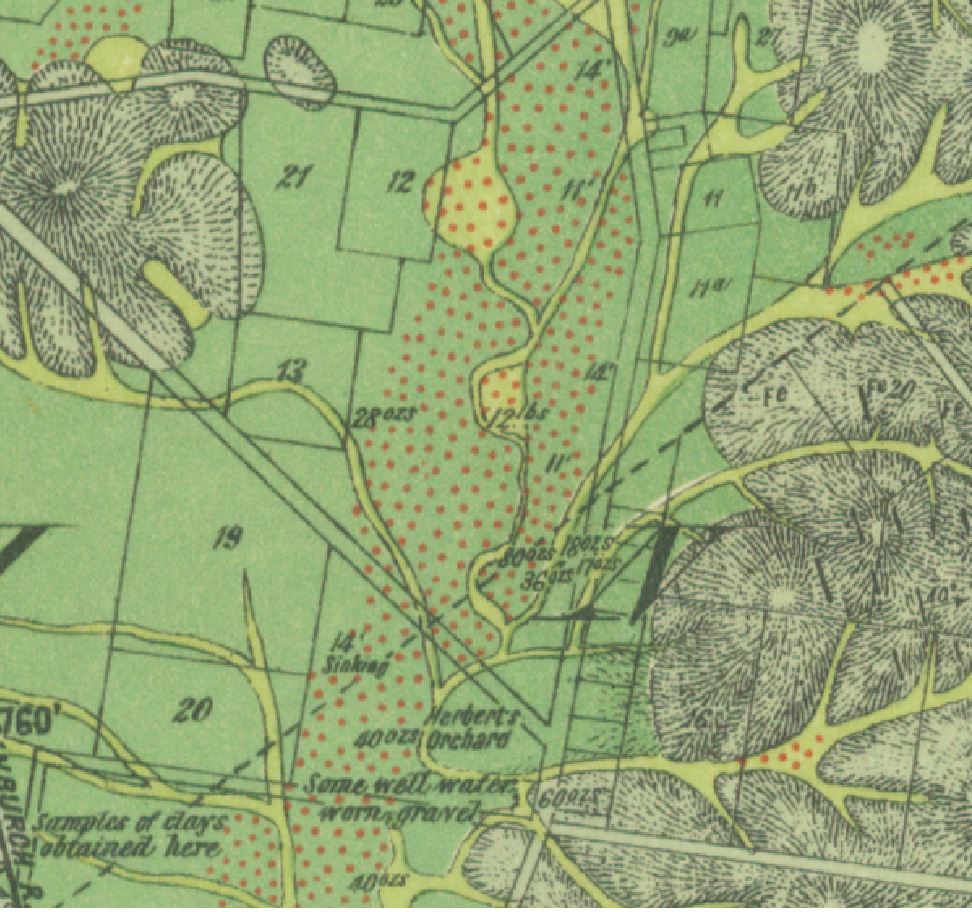Diggings, gold workings, alluvial diggings, and alluvial workings all refer to areas where alluvial mining has occurred. It is often marked on maps by dotted areas. This includes surfacing, creek workings, and sinking shafts to reach buried leads.
Men typically worked these alluvial areas alone, or with a mate, or formed small companies with a few others. These were the diggings which brought people from all over the world, where any man could potentially strike it rich from their own labour, regardless of his previous position in life.
Surfacing, or paddocking, is where miners stripped shallow, gold rich areas down to the bedrock by hand, and processed all the earth they removed using equipment such as gold puddlers and cradles. These areas are sometimes marked on old gold maps, and they are often easily spotted from above using Google Earth.
Creeks were worked much the same as they are today, with the creek bed and banks being tested and processed for gold. Except miners back then used gold puddlers and cradles rather than the trommels and highbankers we use today.
Shafts were sunk in alluvial areas where the gold-bearing layer of wash dirt was located deeper underground. These shafts were dug by hand, sometimes through dangerous drifts.
Foul air in the shafts could often be as dangerous as water, so any holes of somewhat substantial depth were ventilated using windsails.
Where alluvial deposits in ancient riverbeds were buried deeply underground, they were called deep leads.

